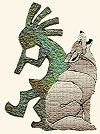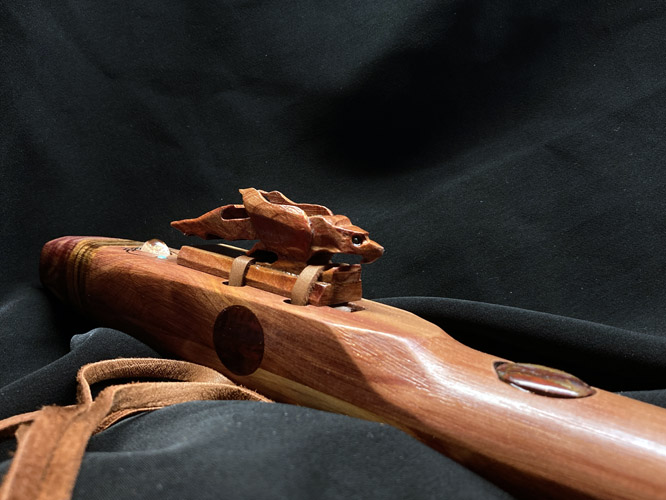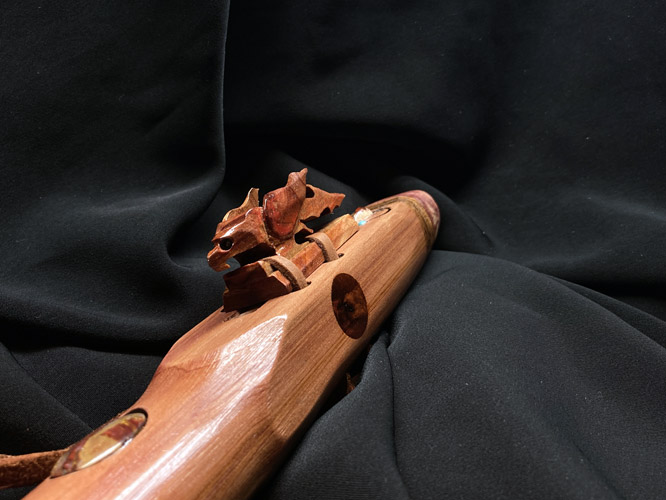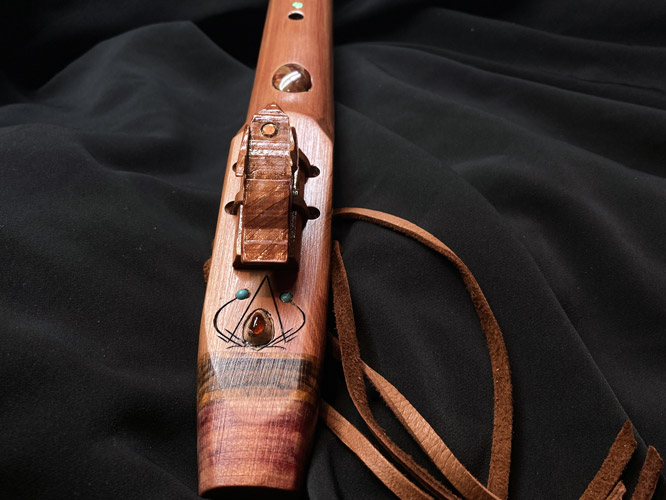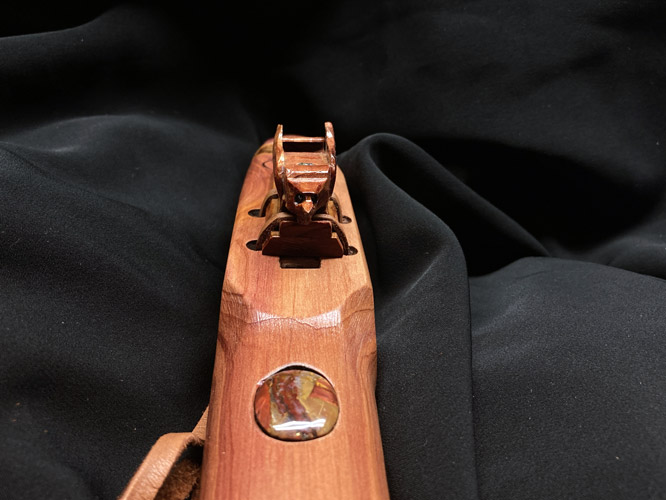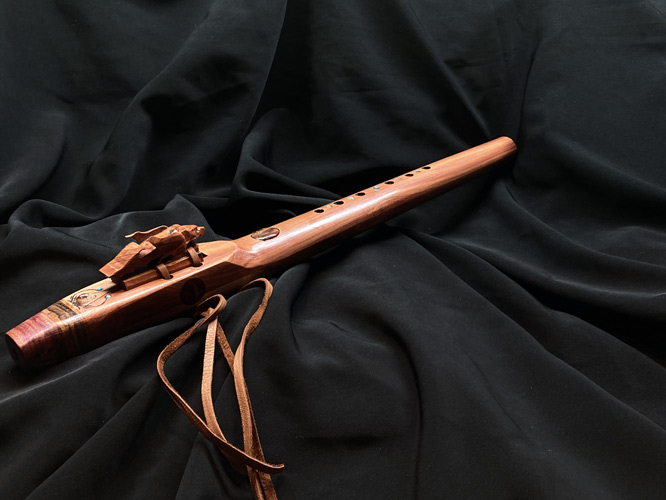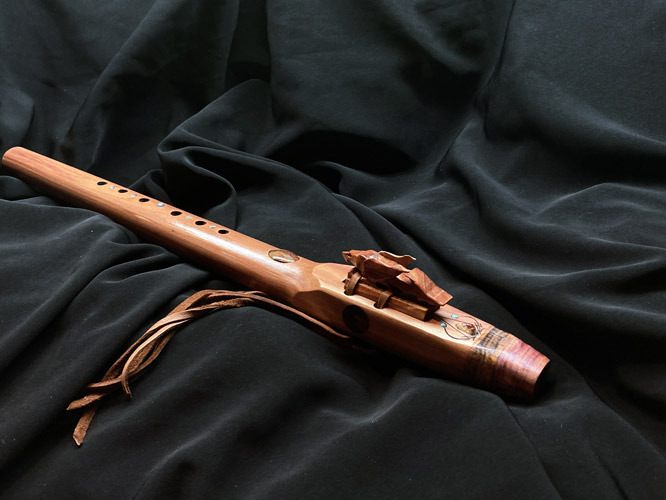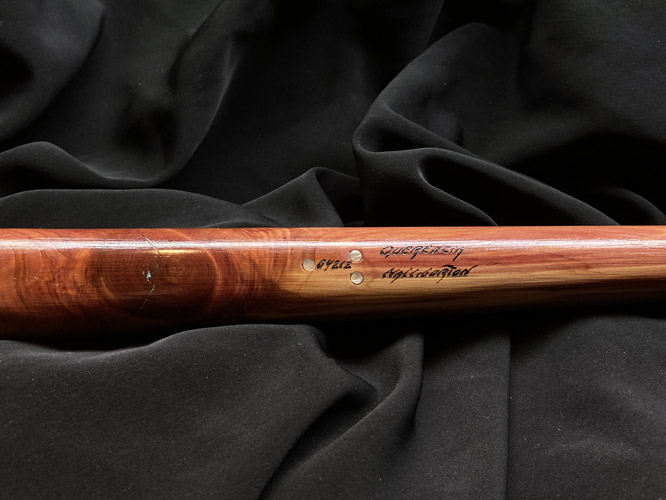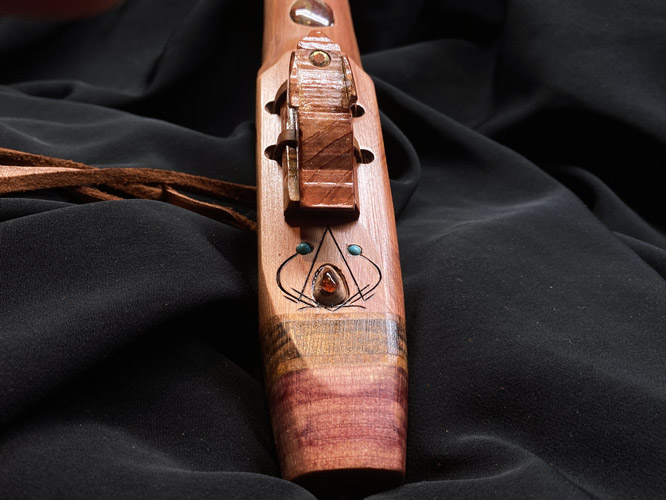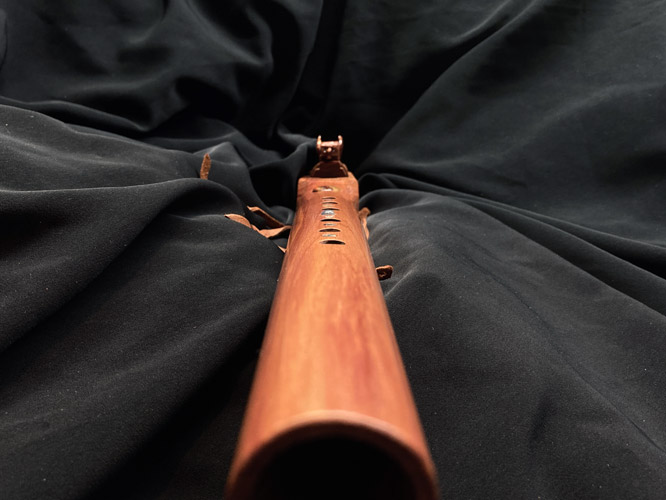$375.00
FREE DOMESTIC SHIPPING
Oklahoma Cedar Gm
1 in stock
I haven’t worked with cedar in about 11 years, primarily because I don’t much care for the voice produced by a soft wood. The large cellular voids generate a softer tone than I care for. At one point I tried hardening aspects of the build to create the tonal elements of a hardwood. Then Robert Gatliff came along. He explained that some folks who know and appreciate the instrument, know exactly what cedar is supposed to sound like, and I should stop trying to make it something different. I did, and as a result, this instrument build was a breath of fresh air. This material behaves as though all it wants to become is a flute. The woods I’ve used for the last decade, want to become nothing more than railroad ties.
This flute is 19-7/8 inches in length, with a 7/8 inch bore diameter. Woods forming the mouthpiece include Mexican Chechen, between layers of SE Asian thuya burl, capped with the cedar. The 19mm disks to each side of the compression chamber are cut from SE Asian amboyna burl. The block, or fetish is cut and assembled entirely from the cedar, with a little subtle hand colorizing. It is not the parakeet I had hoped for, and took longer to build than the flute itself.
Inlay for the instrument begins at the mouthpiece, with an 8x12mm teardrop cut Mexican boulder opal, flanked by 4mm turquoise dots. Moving to the sound chamber, I’ve inset a 17x22mm oval cut pietersite cab, followed by four 5mm abalone dots and a 6mm dome cut labradorite cab, all accenting the finger holes. Both stones are known for their healing properties. Lastly, the fetish has a round faceted 6mm Brazilian azotic topaz set to the crown, and 2.8mm hematite beads set as eyes.
The flute was tuned with a wood temperature of 77° F, an ambient temperature of 72.7°F, and a humidity factor of 35%. All at sea level. Tuning was done at 440Hz.
For drying purposes, it is unnecessary to remove the block from the flute body. Simply loosen the ties, and slide the block gently to the side. Should you want to completely remove the ties, please reinsert them using a wooden toothpick, to avoid damaging the channels on each side of the flue area.
1 in stock
